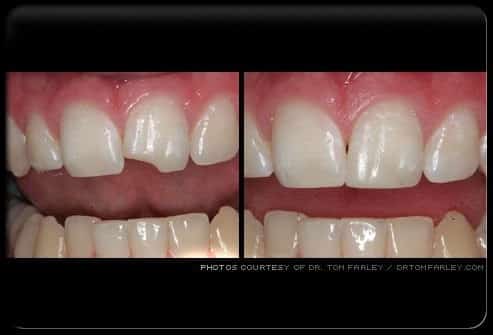Is Bonding as Good as Veneers

How Bonding and Veneers Work
Both of these techniques for smile makeovers give teeth a new surface; this is accomplished by adding materials of dental fabrication to the teeth’s fronts. It can be thought of as giving the tooth a brand new face that covers the old one. Dental bonding achieves this feat by means of dental composite resin. The same material that is used in white fillings, it is durable and strong. The expert sculpts the composite atop the tooth for the creation of contours and appearance that make the tooth blend in with its fellows. Dental veneers also cover the teeth, but they are first made in a laboratory and later affixed to the tooth in the office by the cosmetic dentist. These techniques are capable of correcting a broad range of cosmetic problems. These include the size, shape, surface appearance, and color of the tooth.
How These Techniques Differ
There are a variety of differences between this pair of cosmetic dentistry techniques. First is the price; veneers cost considerably more than their counterpart. Time is another facet. Veneers require a few weeks as well as a set of veneers for temporary use while the patient waits. Dental bonding can be accomplished in a single appointment. Then one must consider permanence; to bond is fully reversible. It can be removed. Veneers are a change to the teeth that is permanent.
The results of veneers are a brand-new smile that creates a drastic change to the teeth’s appearance. The less permanent option is best for correcting a tooth or two that stand out unfortunately amidst the rest of the smile. This option also does not last as long; they may last for years, but have a greater likelihood of discoloration before veneers would.
Choosing Porcelain Veneers
The porcelain veneer consists of a thin layer of material, generally porcelain, that takes the place of enamel and is affixed to the natural tooth that underlies it. Porcelain veneers stand out as one of the best aesthetic means for the creation of a smile that is beautiful and more pleasing. A cosmetic dentist places them on one or more teeth to permit the alteration of the size, shape, and color of the tooth. Veneers, when compared to crowns, require a minimal degree of preparation to the tooth and are more conservative restorations. A bonded material, in general, does not look as good as veneers. The former tend to stain as time goes by, whereas porcelain veneers cannot. Veneers have almost double the lifespan, as well.
Choosing to Bond with Dental Composite
Composite dental bonding has three main advantages: less structure of the tooth requires alteration, a single visit can achieve the desired effect with several teeth, and it costs less than veneers given that the material is less expensive and less time is required. The bonded choice is excellent for younger patients. Whether the patient chooses veneers or their counterpart, they will need to be replaced at some point in the patient’s lifetime. This means that it is a wise idea to make use of the less expensive route in the beginning. Veneers can always be opted for in the future.
The process of bonded dental composite begins with the cosmetic dentist utilizing a shade guide; this is to choose a color of composite resin that most closely matches the patient’s natural teeth color. The surface of the tooth is then roughened. A liquid is applied that permits the adhesive agent to adhere to the tooth. The dentist then applies the resin over the liquid, shapes or molds the tooth, and finally hardens the material using an ultraviolet light. The dentist can even, if necessary, further shape the tooth once the resin has hardened. This is a fast procedure that does not require downtime. Without the need for anesthesia, a daily routine can continue as usual once the procedure is finished. This procedure typically takes from 30 to 60 minutes.
Does a Procedure to Bond Carry Risks?
There are no major risks with this procedure. It is, however, important to remember that composite resin that is utilized in this procedure does not have the strength that natural teeth can boast. This makes it possible for the surface to chip or even separate from the real tooth. These problems do not occur as often as they do with veneers, crowns, or fillings. Beware of chewing ice, pens or pencils, gnawing on fingernails, or biting down on candy or food that is hard. Also, recall that other dental materials are more stain-resistant. Discoloration may occur with the consumption of a great deal of coffee or if the patient smokes.
Bonding and veneers have different advantages and disadvantages. The procedure to bond material to teeth is as good as veneers in its specific purpose. It is less expensive, takes less time and effort, and is excellent for fixing a few teeth at a time. An improved smile offers confidence and heightened self-esteem, both of which become readily apparent in all areas of life. Veneers and the procedure to bond dental composite bring this goal into reality.
Visit us at: www.southbaydental.com or call for an appointment: (310) 327-0404

